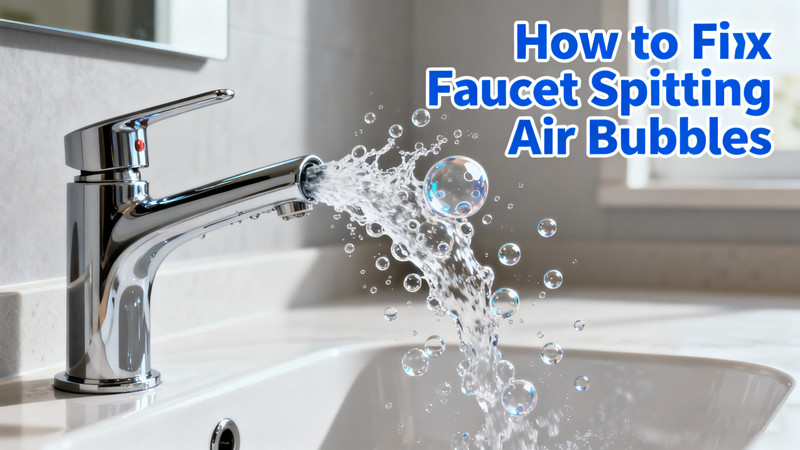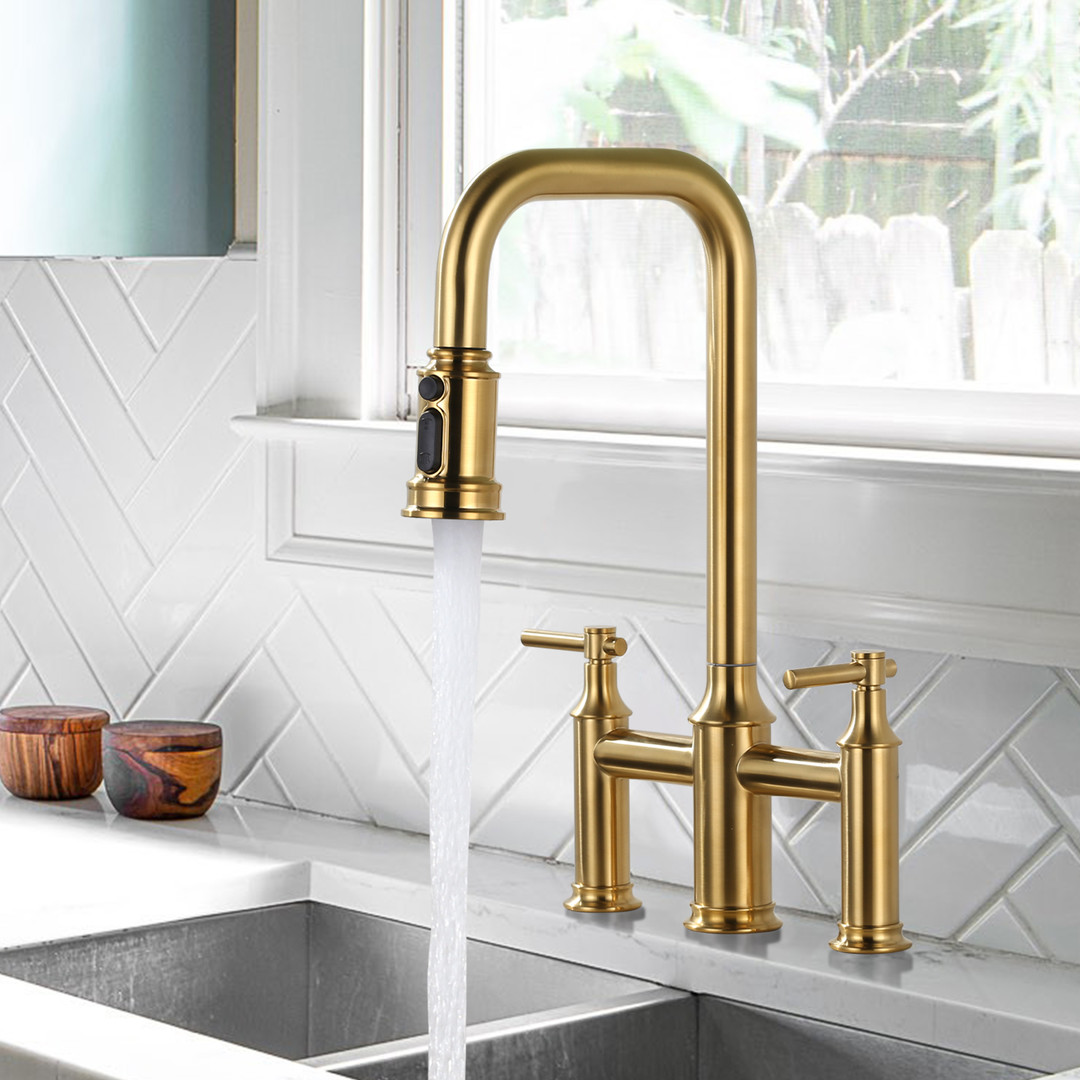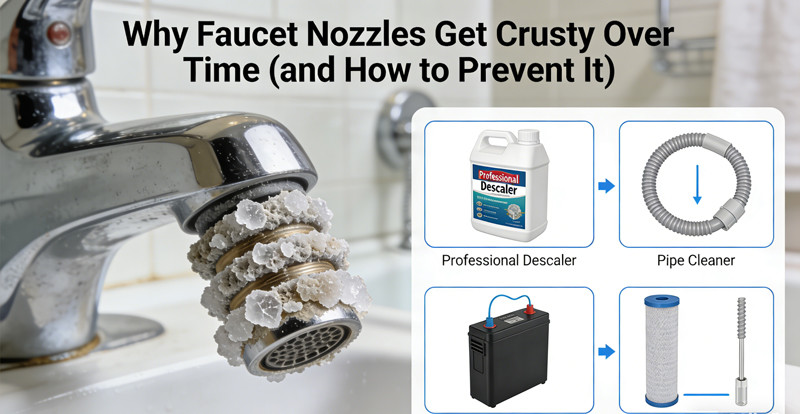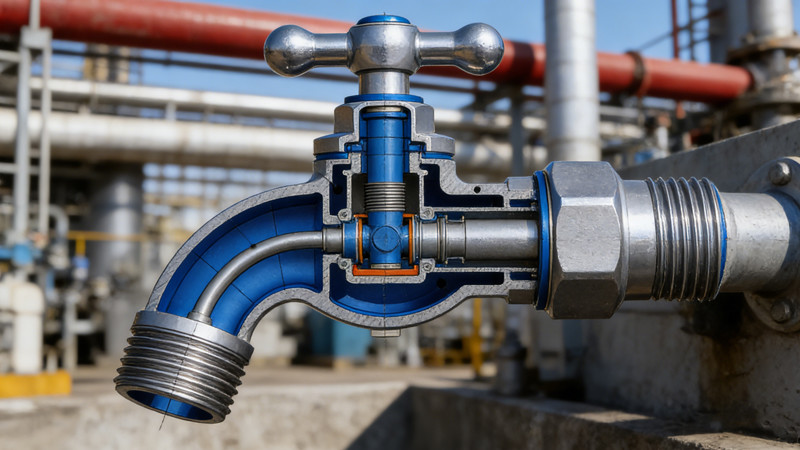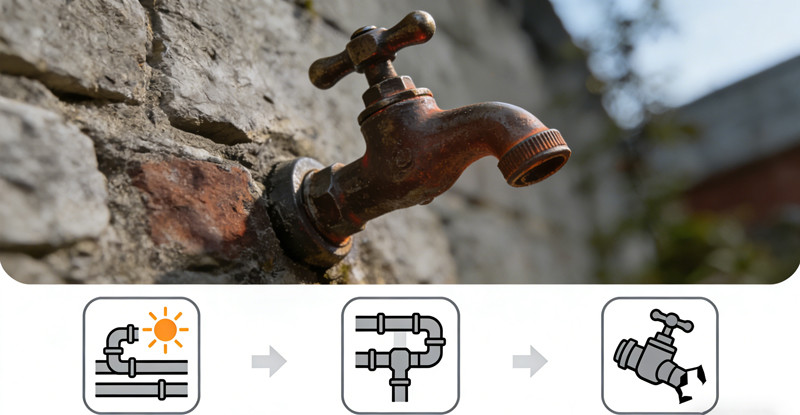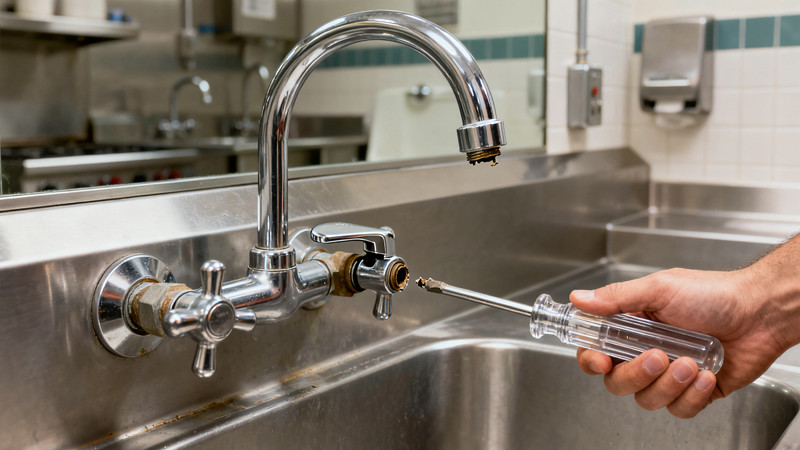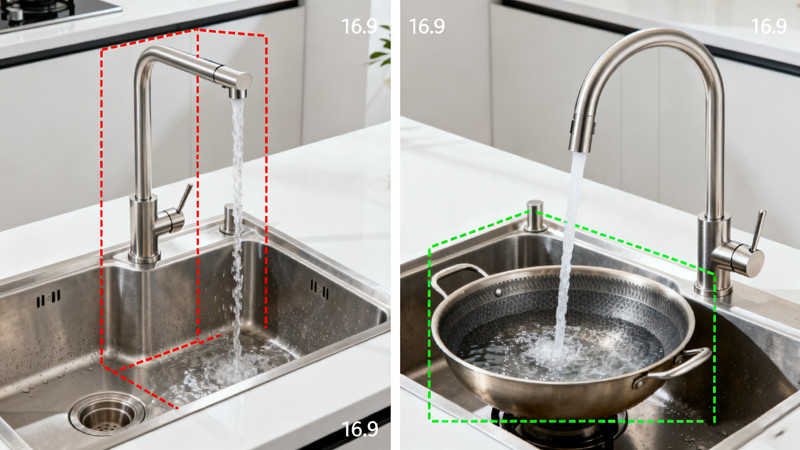If you’ve ever turned on your faucet and seen the water sputter, hiss, or spit instead of flowing smoothly, you’re not alone. It’s a common household problem that can be both annoying and confusing. When air mixes with your water line, it can cause bursts of air pressure that disrupt the steady stream from your faucet. Fortunately, in most cases, the fix is simpler than it looks.
In this guide, we’ll explain why your faucet spits air, what the most common causes are, and step-by-step methods to get your water flowing normally again.
1. Why Is Air Coming Out of My Faucet?
When air gets trapped in your home’s plumbing system, it can interfere with water flow and cause the faucet to spit, sputter, or make a popping sound. The key is understanding how the air got there in the first place.
Here are the most common reasons:
- After Plumbing Work: If you recently replaced a faucet, valve, or pipe section, air can remain trapped in the system when the water supply is turned back on.
- Low Water Pressure or Pump Issues: For homes that rely on well systems, air may enter the line due to a faulty pump or air bladder tank.
- Hot Water Heater Problems: Sediment buildup or a malfunctioning dip tube in your water heater can cause air bubbles to form and travel through your pipes.
- Main Supply Line Leaks: A small crack or loose connection in the main water line can draw in air when water isn’t flowing.
- Municipal Water Flushing: Sometimes, city maintenance or system flushing can introduce air into local water lines temporarily.
Knowing the likely cause will help you target the right solution.
2. Start with the Simplest Fix: Bleed the Air Out
In many cases, your plumbing just needs a quick “burp.” The goal is to flush the air out of your pipes so that water can flow smoothly again.
Here’s how:
- Turn Off the Main Water Valve: Start by shutting off your home’s main water supply.
- Open All Faucets: Open every faucet in your home—from the lowest (like a basement sink) to the highest (like an upstairs bathroom). Don’t forget outdoor faucets if you have them.
- Turn the Water Back On Slowly: Once all faucets are open, turn the main valve back on gradually. You’ll hear air escaping as water begins to flow through the lines.
- Let Water Run for Several Minutes: Keep the faucets open until the water runs smoothly without sputtering.
- Close the Faucets: Start closing the faucets in reverse order—begin with the highest faucet and end with the lowest.
If air was the only issue, your faucet should now produce a steady, even stream of water.
3. Check the Aerator for Trapped Air or Debris
If the sputtering happens only at one faucet (not throughout the house), the problem might be localized.
Your faucet aerator—the small mesh screen at the tip of the spout—is designed to mix air with water for a smooth flow. But when debris, mineral buildup, or trapped air affect it, you may experience uneven flow.
Here’s what to do:
- Unscrew the Aerator: Use your hand or a small wrench (wrap the spout in cloth to prevent scratches).
- Inspect for Debris: Look for sediment, mineral deposits, or worn-out rubber washers.
- Clean the Aerator: Soak it in vinegar for 15–30 minutes to dissolve any buildup, then rinse and reassemble.
- Reattach and Test: Screw the aerator back on and run the faucet to check if the sputtering has stopped.
If cleaning the aerator doesn’t fix it, the air might be coming from deeper within the line.
4. Examine the Water Heater (for Hot Water Issues)
If your faucet spits air only when you turn on the hot water, your water heater may be to blame.
Possible Causes:
- Sediment Buildup: Over time, minerals and debris settle at the bottom of the tank, creating small air pockets.
- Faulty Dip Tube: A broken dip tube can introduce air into the hot water outlet.
- Anode Rod Reaction: Certain anode rods release hydrogen gas as they corrode, especially in areas with hard water.
How to Fix It:
- Flush the Water Heater: Drain the tank completely to remove sediment. Refill it and check the faucet again.
- Inspect the Dip Tube: If it’s damaged, replace it (this may require professional help).
- Change the Anode Rod: If hydrogen gas buildup is the issue, a different rod material—like aluminum-zinc—can reduce reactions.
If you’re not confident working with your water heater, it’s best to call a licensed plumber for inspection.
5. Check for Leaks or Suction in Well Systems
If you use a well rather than municipal water, sputtering faucets can signal a more serious problem.
When the well pump or suction line develops a tiny air leak, it draws air into the system every time the pump runs. Over time, this causes spurts of air at your faucets.
How to Identify It:
- Faucets spit mostly when the pump turns on.
- Air appears in both hot and cold lines.
- You may hear gurgling sounds or see cloudy water.
Possible Fixes:
- Inspect Check Valves and Fittings: Tighten or replace any loose or corroded parts.
- Check the Pressure Tank: A leaking bladder inside can cause air to enter the water lines.
- Professional Pump Inspection: A plumber can perform a pressure test to locate and seal the leak.
6. Look for Main Line or City Supply Issues
If the problem occurs throughout your house and you’ve ruled out air traps, aerators, and water heaters, the air may be entering from the main supply line.
A leak in the buried main line or municipal supply system can introduce air. In this case:
- Contact your local water provider to check for nearby maintenance or water main flushing.
- If neighbors experience the same issue, it’s likely a temporary municipal problem.
- If it’s just your home, a plumber can inspect your main line for cracks or loose joints.
7. Prevent Future Air Problems
Once your faucet is flowing smoothly again, a few preventive measures can help keep it that way:
- Flush the system after plumbing work. Always run faucets for several minutes after turning the water back on.
- Maintain your water heater annually. Regular flushing prevents sediment buildup and gas formation.
- Inspect connections regularly. Tighten fittings and replace aging hoses or valves.
- Install quality faucet aerators. They maintain smooth water flow and prevent splashing or spitting.
- Use WOWOW Faucets. High-quality faucets from WOWOW are designed with precision valves and advanced aerator technology to ensure consistent, bubble-free water flow.
Final Thoughts of Faucet Water That Spits Air
A faucet that spits air might seem like a small problem, but it often signals trapped air or a minor plumbing issue that’s easy to fix. By following a few simple steps—like bleeding your lines, cleaning the aerator, or flushing the water heater—you can restore smooth, steady water flow in no time.
If the problem persists or affects your entire home, don’t ignore it. Air in your plumbing system can waste water and reduce pressure. In such cases, calling a professional plumber ensures the issue is diagnosed and resolved properly.
With the right care and a quality faucet system, you can enjoy a clean, consistent water flow—no sputtering, no noise, just perfect performance every time.
 WOWOW Faucets
WOWOW Faucets